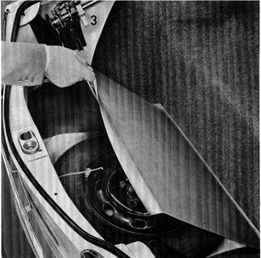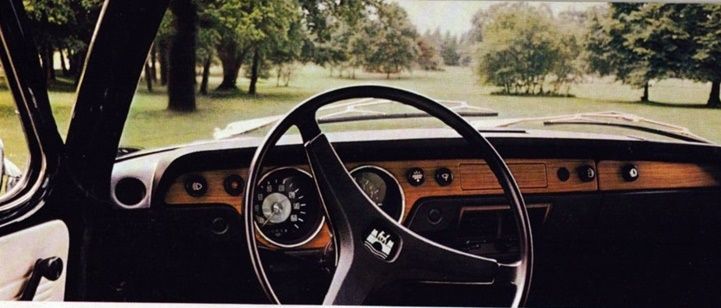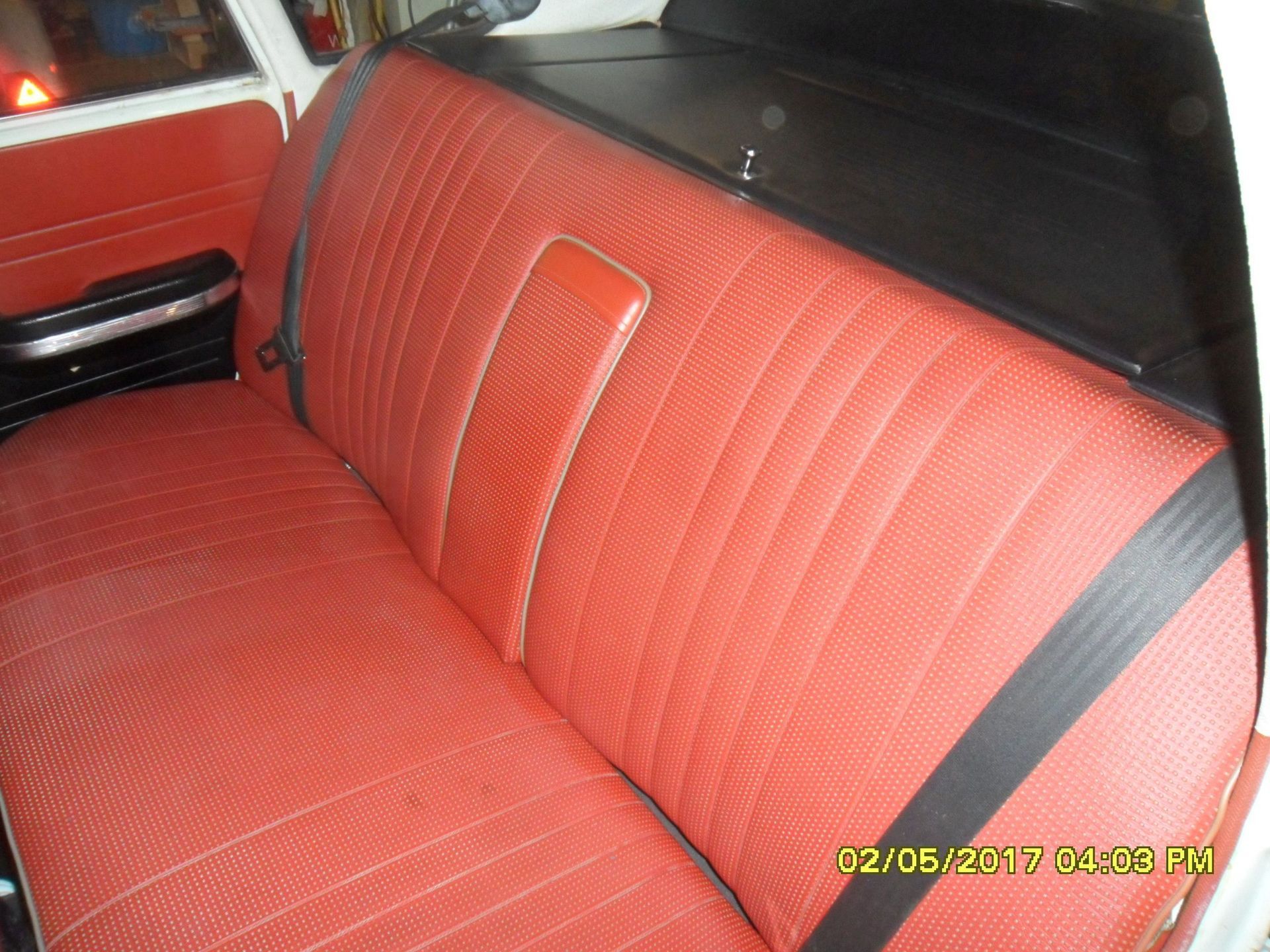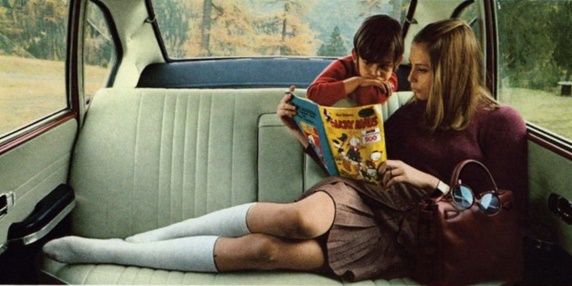Interior fittings and fixtures
Sources: text and photos: contemporary advertising
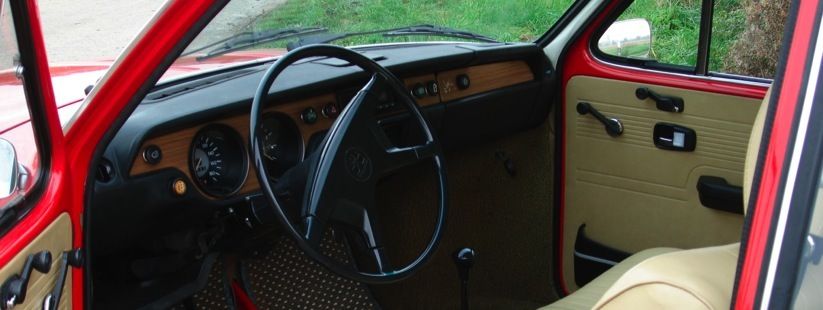

The VW Type 4 sets new standards for seating comfort:
The new tripod individual seats are designed as reclining seats; they are not only adjustable in the longitudinal direction, but also in height. A special back (lumbar) support built into the backrest also supports the back in the lumbar spine area.
Ergonomically designed upholstery on the seat and backrest, together with good suspension thanks to flat spring cores, offer excellent body support and enable comfortable, fatigue-free sitting.
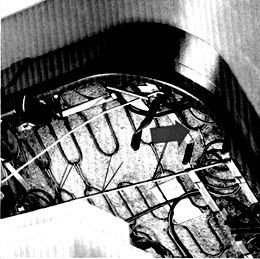
The seats fold backwards for access to the battery under the driver's seat and for easier cleaning of the vehicle floor. This is done with a pull lever under the seat trim, which is only accessible when the door is open.
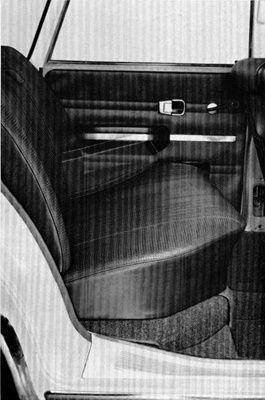
The three-seater rear seat bench with a favorable seat depth and height offers sufficient space and a remarkably large amount of legroom, even with the front seats pushed far back.
The seat and backrest are fitted with flat spring cores and rubber pads. A foldable center armrest completes the comfort.

12 screw connections for seat belts are permanently installed in all VW Type 4 models.
The front seats and the two outer seats on the rear seat bench can be fitted with either shoulder, hip or combined shoulder/hip belts.
Connections for a hip belt are provided for the center rear seat.
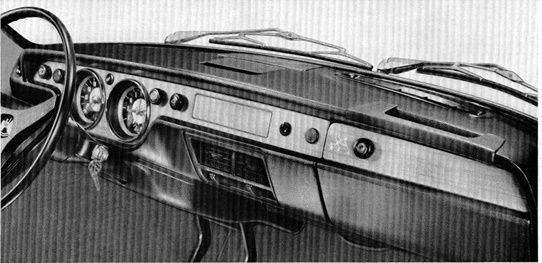
The dashboard of the VW Type 4 is functional, dignified and elegantly designed and meets all the requirements for the greatest possible safety. The two large round elements are easy to read and, with the indicator lamps, are well within the driver's field of vision.
The pull switches have particularly flat buttons made of soft plastic and are arranged for easy access. Control lamps and buttons are marked with internationally understandable symbols.
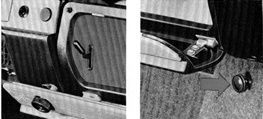
The lever for unlocking the front lid is hidden in the lockable storage compartment, which makes access to the trunk difficult for unauthorized persons.
The locked fuel filler flap can only be opened from inside the vehicle. The release cable button is located on the far right under the dashboard.
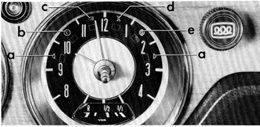
Of the two round instruments, the right one is designed as an instrument cluster. It combines the fuel gauge, the electric timer and the following warning lights identified by symbols:
a) Blinker (green)
b) oil pressure (red)
c) high beam (blue)
d) parking light (green)
e) Charge control (root)
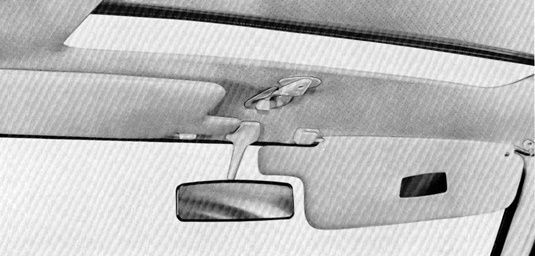
The large, padded sun visors can also be swung out to the side; the one on the right hides a make-up mirror.
The safety interior mirror is buttoned in and offers protection against glare, as it can be dimmed with the touch of a finger on the toggle switch.
On models with a sunroof, the crank for opening and closing the sunroof was in a recessed grip.
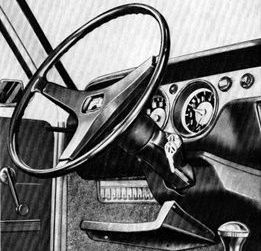
The safety steering wheel with 3-spoke wheel rim and the steering column mounted on the body ensure driver safety.
The turn signal levers with automatic reset are conveniently located for the driver.
The 12-fuse holder is easily accessible on the left below the dashboard.
Underneath there is a storage compartment for things that the driver would like to have conveniently at hand.
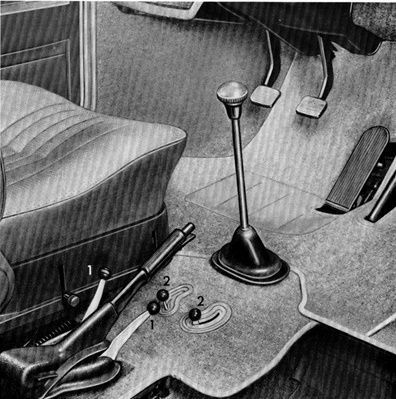
Clutch and brake pedals are suspended.
The 2 pull levers (1) next to the handbrake lever are used to switch on and regulate the fresh air heating.
The hot air outlet into the passenger compartment can be controlled with the two swivel levers (2) in front of the handbrake lever.
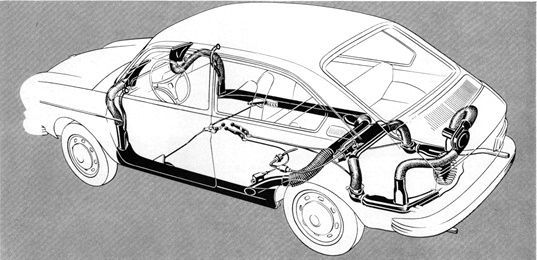
The thermostatically controlled fresh-air heater quickly heats up the interior of the car, regardless of the driving speed and operating condition of the engine, and can be set to any high and constant temperature.
The control options for heat output and distribution are diverse.
The fresh air heater consists of the engine heater and the engine-independent heater booster, which can also be operated when the vehicle is stationary.

The warm air flows out of 2 wide vents in front of the windscreen, from two ring vents on the left and right of the dashboard and from one vent each facing forwards and backwards next to the front seat.
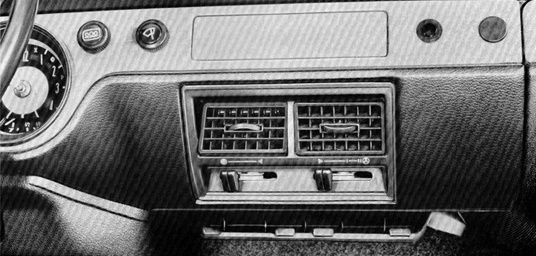
The VW Type 4 is equipped with an extremely effective and draught-free ventilation system. The amount of fresh air, the distribution to the windscreen and into the passenger compartment, and the outflow direction can be controlled in a variety of ways and adapted to any requirement. A two-stage electric fan increases the air flow rate when driving slowly and ensures there is enough fresh air even when the car is stationary.
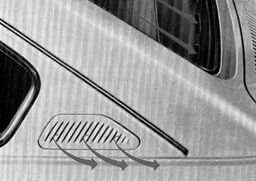
The interior of the car is ventilated even when the windows are closed, as the air can escape below the rear window and is sucked out through outlet openings behind the side windows.
These ventilation slots are connected to 6 openings below the rear window.
The air routed through the rear window also keeps the window largely free of fogging.
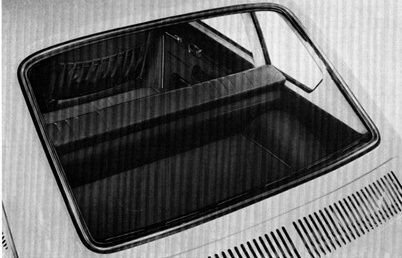
The rich interior equipment offers comfort with a passenger handle, straps and coat hooks as well as an interior light with a toggle switch.
The spacious stowage compartment, the stowage space next to the steering column, two-part door pockets, pouch pockets on the rear seat back walls and a large storage depot (170l) behind the rear seat backrest offer plenty of space.
The doors and rear side panels are lined with plastic, the headliner is made of white synthetic leather, and the floor is lined with textile carpets.
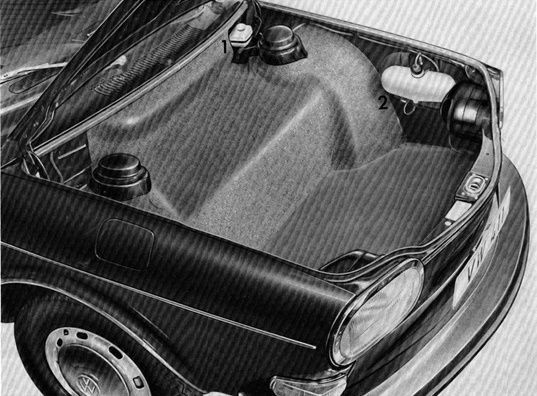
The bolt lock on the front hood is unlocked with the lever in the glove compartment, the safety hook is released with a wide button under the cover.
The deep, spacious trunk holds 390 l. Floor and walls are clad. The trunk contains the brake fluid reservoir, the windshield washer reservoir and the spare wheel is located under the trunk floor, which is designed as a flap with a pull loop (picture on the right).
The engine compartment cover is unlocked with the lever in the left door pillar. It is held in the open position by coil springs
